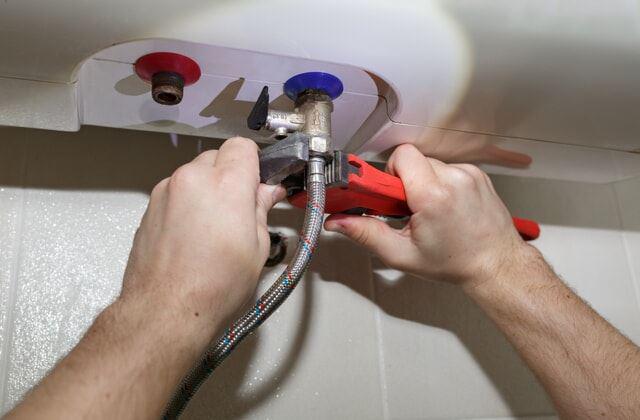They are making several good pointers on the subject of How to Maintain a Hot Water Heater in a Few Simple Steps in general in this article underneath.

Warm water is necessary for everyday comfort, whether it's for a rejuvenating shower or washing meals. To guarantee your warm water system runs successfully and lasts much longer, routine maintenance is vital. This write-up gives sensible suggestions and insights on how to keep your home's hot water system to prevent disruptions and costly fixings.
Introduction
Maintaining your home's hot water system could appear difficult, however with a few simple steps, you can ensure it runs efficiently for many years ahead. This overview covers whatever from comprehending your hot water system to do it yourself upkeep suggestions and knowing when to call expert help.
Significance of Keeping Your Hot Water System
Regular upkeep not only extends the life-span of your hot water system but additionally ensures it operates successfully. Overlooking maintenance can bring about reduced performance, greater energy costs, and even early failure of the system.
Indicators Your Warm Water System Requirements Maintenance
Knowing when your warm water system requires attention can prevent significant problems. Watch out for signs such as irregular water temperature level, unusual noises from the heating system, or rustic water.
Recognizing Your Warm Water System
Before diving right into upkeep tasks, it's helpful to recognize the fundamental components of your warm water system. Normally, this includes the hot water heater itself, pipelines, anode rods, and temperature level controls.
Regular Monthly Maintenance Tasks
Normal regular monthly checks can help capture minor concerns before they escalate.
Purging the Water Heater
Purging your water heater removes debris buildup, boosting effectiveness and prolonging its life.
Monitoring and Replacing Anode Rods
Anode poles protect against rust inside the tank. Checking and replacing them when broken is essential.
Evaluating and Adjusting Temperature Level Settings
Readjusting the temperature setups guarantees optimum performance and safety and security.
Do It Yourself Tips for Maintenance
You can do several maintenance jobs yourself to maintain your hot water system in leading condition.
Checking for Leakages
Frequently check pipes and connections for leakages, as these can result in water damages and higher expenses.
Examining Pressure Alleviation Valves
Testing the pressure safety valve guarantees it functions appropriately and prevents extreme stress buildup.
Protecting Pipelines
Insulating warm water pipelines reduces warm loss and can conserve energy.
When to Call an Expert
While do it yourself maintenance is useful, some problems call for expert experience.
Facility Concerns Calling For Professional Help
Examples include significant leaks, electrical troubles, or if your hot water heater is regularly underperforming.
Regular Specialist Maintenance Advantages
Professional maintenance can include extensive inspections, tune-ups, and ensuring compliance with safety standards.
Conclusion
Regular upkeep of your home's hot water system is vital for effectiveness, durability, and expense savings. By complying with these suggestions and knowing when to seek professional aid, you can make certain a reliable supply of warm water without unanticipated disturbances.
How to Maintain an Instant Hot Water Heater
Before tinkering with your hot water heater, make sure that it’s not powered on. You also have to turn off the main circuit breaker and shut off the main gas line to prevent accidents. Also turn off the water valves connected to your unit to prevent water from flowing into and out of the appliance. 2. When you’re done, you have to detach the purge valves’ caps. These look like the letter “T†and are situated on either side of the water valves. Doing so will release any pressure that has accumulated inside the valves while at the same time avoid hot water from shooting out and burning your skin. 3. When the purge valves’ caps are removed, you have to connect your hosing lines to the valves. Your unit should have come with three hoses but if it didn’t, you can purchase these things from any hardware or home repair shops. You can also get them from retail stores that sell water heating systems. Read the user’s manual and follow it to complete this task properly. When the hosing lines are connected, open the purge port’s valves. 4. You should never use harsh chemical cleaners or solutions when cleaning your unit. Make use of white vinegar instead. It should be undiluted and you’ll probably use about 2 gallons. 5. Now flush your water heater. This task should probably take about 40 minutes. We can’t give you specific directions for this because the procedure is carried out depending on the type, model and brand of your heater. With that being said, refer to the user’s manual. 6. When you’re done draining the unit, you have to turn off the purge port valves again. Remove the hosing lines that you earlier installed on each of the water valves. Put the valve caps (purge port) back in their respective places and be very careful so as not to damage the rubber discs that are found inside these caps. 7. Now that everything’s back in place, check your user’s manual again to find out how to reactivate your water heating system. 8. Once it is working, turn one of your hot water faucets on just to let air pass through the heater’s water supply pipes. Leave the tap on until water flows smoothly out of it. https://www.orrplumbing.com/blog/2014/september/how-to-maintain-an-instant-hot-water-heater/

As an avid reader on How to Maintain Your Water Heater & Prolong its Life, I was thinking sharing that information was a good idea. Those who enjoyed reading our post plz consider to pass it around. Kudos for being here. Revisit us soon.
Request An Estimate